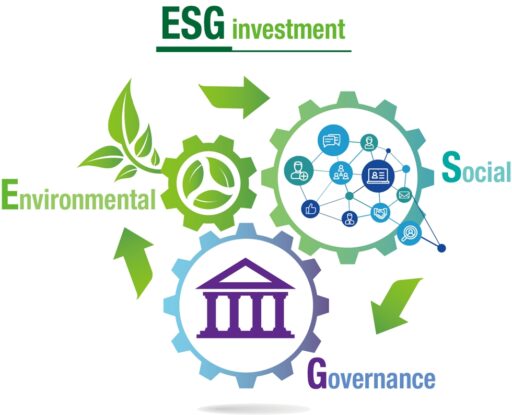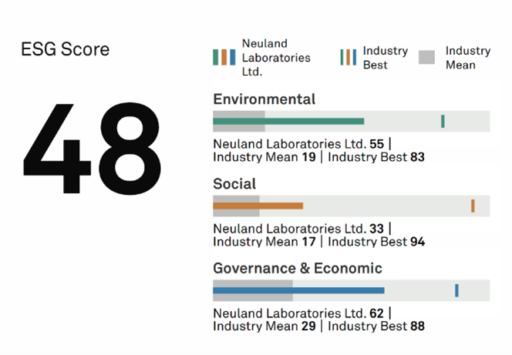 A study by research and sustainability data firm ESG Book has concluded that investments in companies with good ESG performance have generally yielded higher returns than the average within their broader market.
A study by research and sustainability data firm ESG Book has concluded that investments in companies with good ESG performance have generally yielded higher returns than the average within their broader market.
“The overwhelming weight of accumulated research finds that companies that pay attention to environmental, social and governance concerns do not experience a drag on value creation—in fact, quite the opposite,” noted a McKinsey report published in 2016.
Pharmaceutical companies are in a unique position when it comes to ESG. They work with chemicals – some of them dangerous if workers are exposed or they are disposed of improperly. They make medicines that can save lives, provided individuals can affordably access them. For this reason, pharmaceutical companies’ ESG profiles are increasingly being used to evaluate overall business sustainability.
A Short and Sweet Explanation of ESG
The “E” element in ESG references Environmental impact and sustainability. It considers how effectively and efficiently companies are using natural resources and how they are minimizing the impact of manufacturing and supply chain to reduce environmental consequences. Specifically, the “E” element may involve climate change, waste management, carbon emissions, air and water pollution, energy efficiency, natural resources management, sustainability practices, and water conservation. In the pharmaceutical industry, it includes the adoption of “green chemistry” practices.
 “S” is the Social element that focuses on how companies treat their workforces. This involves everything from diversity and inclusion to human rights, health and safety, security, and ethics.
“S” is the Social element that focuses on how companies treat their workforces. This involves everything from diversity and inclusion to human rights, health and safety, security, and ethics.
The “G” element in ESG refers to Governance, which involves decision- and policy making, as well as company structure – including the board of directors, managers, shareholders, and stakeholders. Some key indicators are how well the organization is run in terms of business ethics, board composition, reporting, transparency, strict adherence to local laws and environmental rules, risk and crisis management, tax strategy and anti-corruption, and integrity.
Benefits of a Robust ESG Program
While the benefits to the planet are self-evident, the benefits of an ESG program to corporate health and profitability are more nuanced.
Employment advantages. Increasingly, workers – particularly those of the younger generations – use ESG policies to determine which job offers they will accept. This can help limit employee turnover as well as recruiting, hiring, and training costs.
Investor attraction. Investors are becoming aware that higher ESG performance corresponds with higher rates of return, lower risk and better long-term corporate sustainability. A survey conducted last year by Gallup revealed that nearly half of investors – 48 percent – indicated they are very or somewhat interested in purchasing sustainable investing funds. The study also found that 70 percent of investors who are employed full or part time indicated they would definitely (13 percent) or probably (57 percent) include sustainable investing funds as elements of their employer-sponsored 401(k) if they were available.
Avoidance of fines. Misbehavior by manufacturing companies can lead to expensive fines and lawsuits. In the last decade, major pharmaceutical companies have paid out billions in fines for everything from false claims, bribery, off-label promotion, kickbacks, and Medicare fraud. Additionally, careless labor practices can result in expensive occupational injuries and accidents.
More productive employees. Responsible companies are taking employee health more seriously, from COVID-prevention strategies to onsite awareness programs about cardiovascular health, diabetes, stress and diet as well as occupational health-related training. Healthier employees lead to fewer sick days and lower turnover.
A reduction in operating costs. Asset management and predictive maintenance are strong elements of a good ESG policy, and done properly, they can lead to less downtime in manufacturing operations.
Corporate reputation burnishing. Pharmaceutical companies are in a unique position to help people access life-saving drugs at affordable costs. With high drug costs and anti-competitive behavior showing up regularly in the headlines, pharmaceutical companies that build a strong program which gets medications to the people who need them at affordable costs will stand out.
Transparency. At the core of a good ESG program is a boost in awareness and engagement for employees and stakeholders to become active parts of the change. By sharing the main environmental challenges, their objectives and the best practices from the field, companies can multiply the impact of their efforts.
At Neuland, we recognize that the raw materials we draw from the environment for our operations are shared resources, and that we have an obligation to minimize the impact of our operations on these resources and preserve them. For instance, we have implemented a water management strategy that focuses on reducing water consumption and increasing the percentage of recycled water in our operations.
As an organization, we ensure that support is extended to employees in performing their duty towards the environment through a dedicated budget and goal setting to measure the implementation of policies and ISO systems.
All of our sites have adopted a “Zero Wastewater Discharge” approach. During the rainy season, surface water runoff is collected and transferred to the CETP in accordance with the pollution control board’s statutory requirements. Effluent quality is evaluated daily, and third-party monitoring occurs monthly. Finally, we have put in place a strong program for material efficiency that seeks to attain optimal use of raw materials as well as practices that minimize the environmental impact of raw material use.
We have successfully achieved our 2022 environmental goals with:
- 2% reduction in direct greenhouse gas emissions
- 10% reduction in water withdrawal
- 34% recycling of waste
- Zero waste to land fill.
Our new environmental goals include becoming carbon neutral across our internal operations by 2030 and purchasing 100 percent renewable energy and influencing similar action across our supply chain. Our initiatives have been approved by the United Nations Global Compact (UNGC) and achieved a Silver rating in ECOVADIS sustainable supplier assessment.
Learn more about Neuland’s ESG initiatives and use of Green Chemistry.











